Power Dynamics in Organizational Behavior
Concept Map
Exploring power dynamics in organizational behavior reveals how authority, control, and influence shape interactions and outcomes. Power hierarchies affect business operations, efficiency, and employee morale. Real-world case studies illustrate the strategic use of power disparities in negotiations, while techniques for effective negotiation can mitigate imbalances. Understanding and managing these dynamics is crucial for business sustainability and competitive equity.
Summary
Outline
Exploring Power Dynamics in Organizational Behavior
Organizational behavior is a field of study that examines the impact of individuals, groups, and structures on behavior within organizations. A key aspect of this study is the analysis of power dynamics, which refers to the distribution and exercise of power among individuals and groups within an organization. Power dynamics are evident in the relationships between different levels of management and employees, between organizations and their suppliers, and among competing departments within a company. These dynamics are shaped by authority, which is the legitimate right to make decisions; control, which is the ability to marshal resources and direct activities; and influence, which is the capacity to affect the behavior or thinking of others. Understanding these power imbalances is essential for analyzing how they influence organizational interactions and outcomes.The Impact of Power Hierarchies in Business
Power hierarchies are a fundamental element of organizational structure and can have profound effects on business operations. When power is distributed and exercised appropriately, it can lead to increased organizational efficiency, foster innovation, and drive growth. Conversely, mismanagement of power can result in negative consequences such as destructive competition, perceptions of injustice, and a decline in employee morale and productivity. Effective management of power hierarchies is therefore critical to the health and performance of an organization.Case Studies of Power Imbalances in Business
Examining real-world instances where power imbalances have been addressed can provide valuable lessons for businesses. For example, a technology company that restructured to decentralize power saw improvements in efficiency and a reduction in internal conflict. In another case, the negotiations between major companies like Apple and Amazon with book publishers demonstrate how power disparities can be used strategically to influence industry-wide pricing models. These examples underscore the tangible effects of power dynamics in the business world.Bargaining Power Disparities in Business Negotiations
In business negotiations, the concept of bargaining power is pivotal and can greatly influence negotiation outcomes. Factors such as a company's market dominance, financial resources, and access to critical information can create an imbalance in bargaining power, often represented symbolically as \( \Delta BP \). This disparity can dictate the terms of agreements and the distribution of benefits, with stronger parties able to impose more favorable conditions. For instance, a supplier with a unique product that is in high demand may command better terms from buyers who rely heavily on that product.Origins of Power Disparities in Business
Power disparities in business arise from a variety of sources, including differential access to resources, hierarchical position, market dominance, and informational asymmetry. These factors can create a power differential, denoted as \( \Delta P \), which quantifies the extent of the imbalance between two parties. A thorough understanding of these underlying causes is crucial for businesses to navigate challenges effectively and seize strategic opportunities.Techniques for Effective Negotiation with Disparate Bargaining Power
A disparity in bargaining power does not necessarily preclude successful negotiation. Employing strategies such as comprehensive research, developing alternative options, and refining negotiation skills can help to mitigate power imbalances. For instance, Starbucks' entry into the Australian market involved extensive research into local coffee culture, demonstrating how a company can negotiate effectively even when it does not hold the upper hand in bargaining power.Consequences of Power Imbalances in Business
Power imbalances can have a significant impact on decision-making processes, profitability, and the sustainability of businesses. They are present in various types of business relationships, including those between suppliers and companies, employers and employees, and companies and consumers. A power imbalance, quantified as \( \Delta P \), can lead to exploitative practices, stifle competition, and discourage innovation. Recognizing and addressing the effects of power imbalances is vital for ensuring a competitive and equitable business environment.Overcoming and Leveraging Power Imbalances in Business
Managing power imbalances in business requires strategic actions such as strengthening one's position, forming alliances, and acquiring relevant information. It is also important to understand the tactics employed by more powerful entities and to remain flexible in response. For example, a smaller supplier might diversify its customer base or offer unique value propositions to counterbalance the power wielded by a large corporate buyer. By employing such strategies, individuals and businesses can navigate power imbalances effectively, transforming potential challenges into opportunities for growth and collaboration.Show More
Definition of Organizational Behavior
Impact of Individuals, Groups, and Structures
Organizational behavior studies how individuals, groups, and structures affect behavior within organizations
Analysis of Power Dynamics
Distribution and Exercise of Power
Power dynamics refer to the way power is distributed and exercised among individuals and groups in an organization
Shaped by Authority, Control, and Influence
Power dynamics are influenced by authority, control, and influence, which are the legitimate right to make decisions, the ability to direct activities, and the capacity to affect others' behavior or thinking
Importance of Understanding Power Imbalances
Understanding power imbalances is crucial for analyzing how they affect organizational interactions and outcomes
Effects of Power Hierarchies
Positive Effects
When power is distributed and exercised appropriately, it can lead to increased efficiency, foster innovation, and drive growth
Negative Effects
Mismanagement of power can result in destructive competition, perceptions of injustice, and a decline in employee morale and productivity
Importance of Effective Management
Effective management of power hierarchies is critical to the health and performance of an organization
Real-World Examples of Power Imbalances
Restructuring for Decentralization
A technology company that restructured to decentralize power saw improvements in efficiency and a reduction in internal conflict
Strategic Use of Power Disparities in Negotiations
Negotiations between major companies like Apple and Amazon with book publishers demonstrate how power disparities can be used strategically to influence industry-wide pricing models
Tangible Effects of Power Dynamics in Business
Real-world examples highlight the tangible effects of power dynamics in the business world
Bargaining Power in Business Negotiations
Definition of Bargaining Power
Bargaining power refers to the ability to dictate the terms of agreements and the distribution of benefits in business negotiations
Factors Influencing Bargaining Power
Factors such as market dominance, financial resources, and access to critical information can create an imbalance in bargaining power
Strategies for Mitigating Power Imbalances
Employing strategies such as research, developing alternative options, and refining negotiation skills can help mitigate power imbalances in business negotiations





